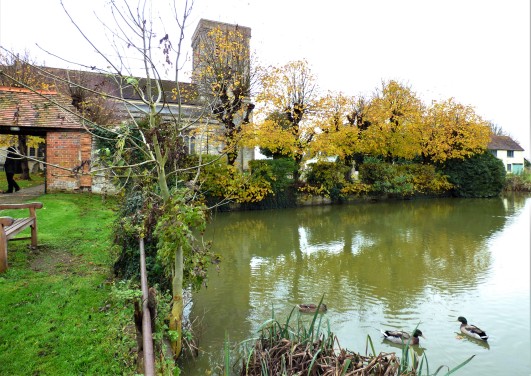
We tend not to do any research before we visit a sacred site, be it an old church or a stone circle. I have written before of some of our reasons. First, there is the risk of spoiling the surprise as you begin to notice what is there. Then too, with no expectations, you are not disappointed if a wonderful place is locked. You get a chance to ‘feel’ the site too, without an overlay of specific knowledge contamination first impressions. But there is an even simpler reason for not doing research prior to a visit… half the time, we have no idea where we are going.
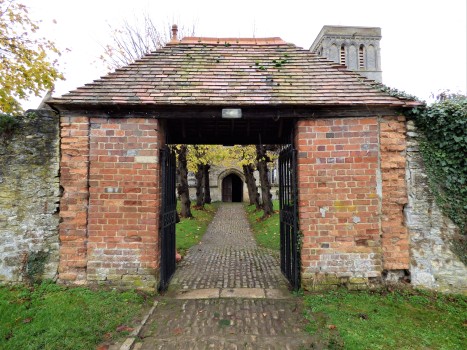
We may set out for a specific place, but we invariably get sidetracked, or something ‘clicks’ and we end up chasing down clues. And sometimes, there is an odd combination of circumstances, like closed roads, traffic or a bird to follow, that just happens to lead us in the right direction, even though we have no idea why.

The church of St Mary’s at Haddenham was one of those visits that inserted itself, somehow, into our day. A few weeks ago, we had planned a return visit to St Nicholas’ church and the inevitable stop at our ‘own’ special chapel. Quite how we ended up in Haddenham, I have no idea.
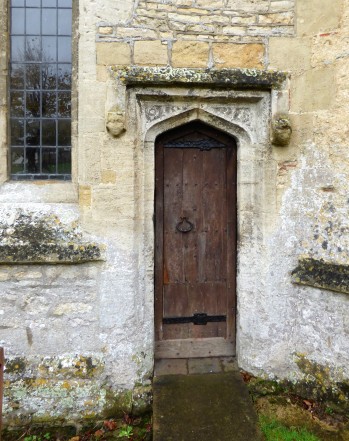
I had been to St Mary’s once before… over twenty years ago when we had just moved to the area and were exploring. Back then, my interest in churches was minimal. I lacked any understanding of how to visit a church, what to look for or how to read what I saw. I had no memory of this place, beyond a vague recollection that I had not been overly impressed. The village itself, though, is lovely, with a beautiful collection of historic houses and thatched cottages overlooking the church green and village pond. We had tried on a couple of occasions to get into the church, but even we shrink from invading funerals and weddings… though both have been, inadvertently, known to happen.
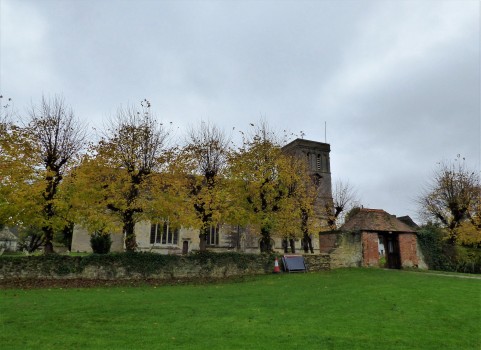
From the outside, St Mary’s is impressive. It has all the hallmarks of an interesting church. The church dates back to the 1100s, with the inevitable later alterations and additions. There was a Saxon church on the site, long before this one. The main body of the current church is only around eight hundred years old, with aisles and porch from the fourteenth century. The wood of the main door is carved with the date 1637, there is a narrow Tudor doorway around the back, stained glass, heads that decorate the walls and parapets and there is a nice, round font beside the main door, now in use as a planter, that appears to be ancient. All the hallmarks of interesting… except, if the font is outside, what have they done with the interior? Most of the old churches have been either restored, or modernised, or both and the results can be disastrous.
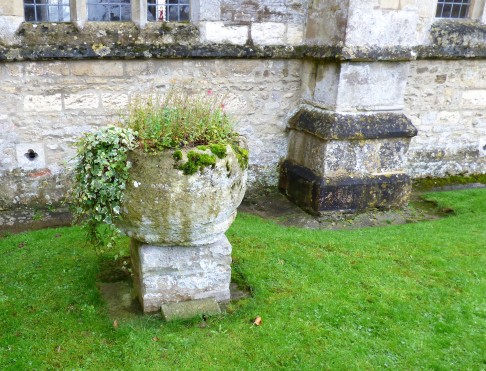
Unusually, the niche above the door still holds a statue of a saint. Many of these were destroyed during the Reformation and never replaced or have been removed in later years to prevent theft or vandalism. Even more unusual is the fact that this is a church dedicated to St Mary, yet the niche does not hold a statue of either the Virgin or the Magdalene…
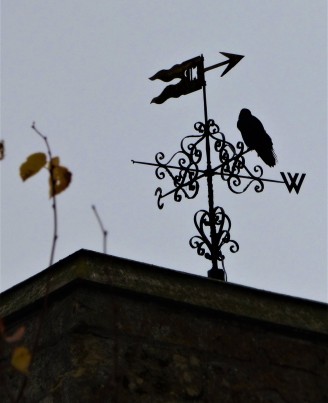
It is difficult to be certain from below, but the colouration of the stone would suggest this is a later replacement of the original statue, yet why on earth does St Mary’s welcome the faithful with an image of St Philomena, a young woman whose remains were discovered in 1802 in the Catacomb of Priscilla in Rome. A hollowed rock grave was found, sealed with three engraved tiles which, when read in the correct order, were transliterated as ‘peace be with you, Philomena’. Within the grave they found the remains of a young girl, between thirteen and fifteen years old, and a vial of what appeared to be blood. The burial suggested that this was a virgin martyr.
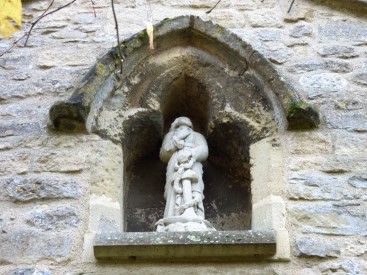
The story of Philomena’s life is a fairly predictable one; the details of the story may differ, but its theme meanders through Christian myth and symbolism across the globe. The main difference here is that her life story was revealed by the saint herself to Sister Maria Luisa di Gesù, a nun from Naples, in 1833. Philomena, whose name means ‘Daughter of Light’, was a Greek, Christian princess, who, upon reaching puberty, took a vow of consecrated virginity. The Emperor Diocletian desired her and sought her hand in marriage. When she refused, she was scourged…but cured by angels. Next, she was tied to an anchor to be drowned, but the angels cut the rope and raised her up out of the waters. Diocletian ordered her shot. The first arrows hit home, but the angels healed her wounds. The next arrows turned aside, while the third volley rerouted and killed six of the archers, convincing the rest to become Christians. Typically, the Emperor had Philomena beheaded, at three in the afternoon on a Friday, echoing the story of Jesus’ own death.
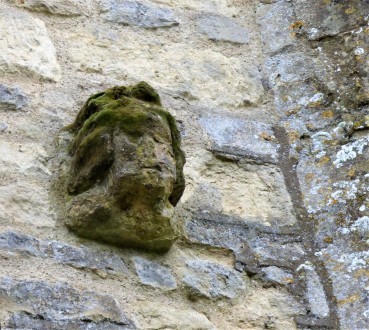
This is a familiar tale and its connection with our beheaded saints at our own little chapel had to bode well for our being back on the trail. Our earlier visit there had revealed, in a place we know so well that you would not think there could be any surprises, a number of symbols we had seen but never really taken note of. Large amongst them were oak leaves and acorns and the fleur de lys, a symbol with so many associations it would take a book to enumerate them, but which have symbolic links to the Virgin Mary, the royal houses of France and the Knights Templar…even in our tiny chapel and St Nick’s where we had tried to get in earlier that day, only to find it had been gutted. Now, we have always shied away from Templar stuff; it has been ‘done to death’ over the past few years, but it seems to be insistently wanting us to take note recently. Still, it would take more than a few odd symbols to convince us to follow that particular trail. We opened the door, wondering what we would find…
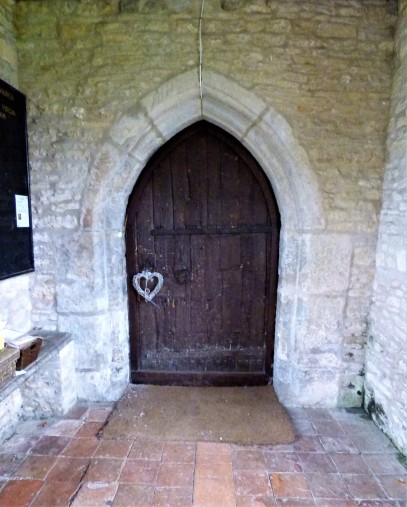









































You have my interest. I had not known the story of St. Philomena so thanks for the enlightenment.
LikeLiked by 1 person
I had not come across her either, Darlene, though her story is similar to many other virgin martyrs.
LikeLiked by 1 person
As a lover of history I really enjoyed this. what a beautiful place and those doors! It looks to be steeped in history, and Oh poor young Philomena, I’d never heard of her before, thank you
LikeLiked by 1 person
Thanks, Sam. We are lucky to have so many of these lovely old churches here… with centuries of history within their very fabric.
Phiomena was a new story for me too, but I found the research fascinating, though her story is by no means unique.
LikeLiked by 1 person
I am enjoying reading your posts about your travels.
Sent from my iPhone
>
LikeLiked by 1 person
Thanks Patty 🙂
LikeLike
Lovely post Sue.. poor Philomena.. whatever the truth of the story.. hugs xx
LikeLiked by 1 person
Indeed, Sally… there was cerainly a young girl in that grave. xx
LikeLiked by 1 person
Thanks Sue, most interesting & intriguing! Lovely photos too!
LikeLiked by 1 person
Thank you, Susan. I love being able to share these old places.
LikeLike
I hope there is a forthcoming part two. I did not know the story of Philomena. Fascinating. Lovely photos.
LikeLiked by 1 person
Tomorrow morning, Jennie…there was way too much to share in one post 🙂
LikeLiked by 1 person
Good news!
LikeLike
🙂
LikeLiked by 1 person
I really enjoyed reading this, Sue. I love old churches but know so little about them. And I had never heard the story of Philomena before. Equally sad and powerful!
LikeLiked by 1 person
Thanks, Mae. We’ve learned a fair bit about them over the years…though ot enough really.
LikeLiked by 1 person
Oh, my. Philomena didn’t go down easily. Fascinating.
LikeLiked by 1 person
She certainly didn’t, poor thing.
LikeLiked by 1 person
Reblogged this on Die Erste Eslarner Zeitung – Aus und über Eslarn, sowie die bayerisch-tschechische Region!.
LikeLiked by 1 person
Thank you! Hope you enjoyed the visit 🙂
LikeLiked by 1 person
Wonderful post!
It did make the American in me come out when I saw the “only around eight hundred years old” line, though – it definitely doesn’t get an “only” on our side of the pond!
LikeLiked by 1 person
We spend a lot of time in stone circles and at ancient sites five and six thousamd years old… eight hundred years makes it a baby 😉
LikeLiked by 1 person
Okay, wow. Normally I’m not so much drawn to churches, but this one has me. ❤
LikeLiked by 1 person
It had us too 🙂
LikeLiked by 1 person
Pingback: On the trail again… – The Militant Negro™
Thanks for sharing 🙂
LikeLike
I was sure I recognized Ste Philomena from somewhere, but a bit of brief research confirms that I probably haven’t — but she sounds so familiar.
Not knowing where you are going is my favorite reason for not doing advance research! Being constantly lost adds a certain level of surprise to my otherwise dull life 🙂
LikeLiked by 1 person
We like to have the adventure to look forward to, too 🙂
Philomena’s story is one I have told before…except, it wasn’t hers, it was that of half a dozen other martyred virgins, most of who ended up minus a head.
LikeLike
Reblogged this on Stuart France.
LikeLike